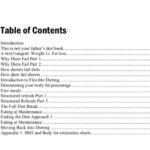Volume and price analysis is a powerful technique used by legendary traders like Charles Dow, Jesse Livermore, and Richard Ney to anticipate market movements and build wealth. While they relied on ticker tape, today we use trading screens, but the principle remains the same: leverage the leading indicators of volume and price.
Starting with volume analysis early in my trading career was a fortunate advantage. The logic behind it is compelling. Volume, combined with price, offers a unique edge – it’s a leading indicator, something rare in the trading world. Most other indicators lag behind.
As traders and investors, our primary goal is to forecast market direction. What better way to achieve this than by utilizing the two leading indicators available: volume and price? Individually, they offer limited insight. Volume is simply a measure of activity, and a price is just a price. However, when combined, they create a potent analytical approach for confidently predicting market trends.
This guide provides a comprehensive understanding of volume price analysis, starting with the fundamental principles. Whether you’re a day trader or a long-term investor, regardless of the market, instrument, or timeframe you trade, this resource will equip you with the knowledge to succeed. All you need is a chart displaying volume and price.
Let’s delve deeper into understanding how to analyze volume and price effectively.
Understanding Volume
Volume represents the quantity of shares or contracts traded within a specific period. A surge in volume often signals increased interest or conviction in a particular price movement.
High volume can confirm a trend. For instance, if the price of a stock is rising on increasing volume, it suggests strong buying pressure, indicating the uptrend is likely to continue. Conversely, rising price on decreasing volume might signal a weakening trend.
alt: A stock chart displaying price and volume, showing rising price with decreasing volume.
Understanding Price
Price represents the value at which a transaction occurs. Price movements alone can be misleading, but combined with volume, they provide a much clearer picture.
Price action is a fundamental aspect of technical analysis. Observing price patterns and formations provides insights into potential future movements. However, integrating volume data enhances the reliability of these observations.
Combining Volume and Price for Accurate Analysis
The true power of volume price analysis lies in combining these two indicators. Here are some key principles:
- Volume Confirms Price Trends: As mentioned earlier, rising prices accompanied by rising volume generally confirm an uptrend. Conversely, falling prices with rising volume confirm a downtrend.
- Divergence Signals Potential Reversals: When price and volume diverge, it can signal a potential trend reversal. For example, if the price is making new highs, but the volume is declining, it suggests the uptrend may be losing momentum.
alt: A candlestick chart with volume indicator at the bottom, illustrating price and volume relationship in trading.
- Volume Precedes Price: Volume often leads price. A significant increase in volume can indicate that a major price move is imminent.
- No-Demand and No-Supply: “No-demand” appears during an uptrend when the price fails to make a higher high despite effort (volume), suggesting waning buyer interest. “No-supply” occurs during a downtrend when the price struggles to make a lower low despite effort, signaling sellers are losing conviction. These signals are critical for early trend change detection.
Practical Applications of Volume Price Analysis
Volume price analysis can be applied in various trading strategies:
- Identifying Breakouts: A breakout accompanied by high volume is more likely to be successful than one with low volume.
- Confirming Support and Resistance Levels: Significant volume at support or resistance levels indicates the strength of those levels.
- Spotting Accumulation and Distribution: Observing volume patterns can help identify periods of accumulation (buying) and distribution (selling) by institutional investors.
alt: Volume price analysis of a stock chart, illustrating accumulation and distribution phases.
Volume Price Analysis offers a robust framework for understanding market dynamics. By mastering the interpretation of volume and price interactions, traders and investors can gain a significant advantage in anticipating market movements. Start with the fundamentals, apply the principles to various market conditions, and continuously refine your understanding through practice. Embrace the power of volume and price, and you’ll be well on your way to becoming a more informed and successful trader.
